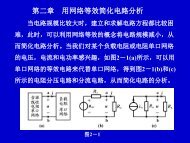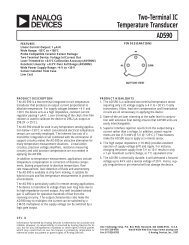AN INVARIANCE PRINCIPLE IN THE THEORY OF STABILITY
AN INVARIANCE PRINCIPLE IN THE THEORY OF STABILITY
AN INVARIANCE PRINCIPLE IN THE THEORY OF STABILITY
Create successful ePaper yourself
Turn your PDF publications into a flip-book with our unique Google optimized e-Paper software.
functions cp on [-r,O] to Rn with l{cpll =<br />
max (Icp(~)l ; -r 5 T s 01. Convergence in c is uniform conver-<br />
gence on [-r,O]. A function x defined on [-r,m) to Rn to<br />
said to be a solution of (9) satisfying - the initial condition cp<br />
at time t = 0 if there is an a > 0<br />
such that %(t) = f( "t )<br />
for all t in [O,a) and x = cp . Remember x = cp means<br />
0 0<br />
X(T) = cp(z), -r 5 T 5 0. At t = 0, k is the right hand deriv-<br />
14<br />
ative.<br />
The existence uniqueness theorems are quite similar to<br />
those for ordinary differential equations. If f is locally<br />
Lipschitzian on C, then for each cp in C there is one and only<br />
one solution of (9) and the solution depends continuously on cp .<br />
The solution can also be extended in C<br />
for t > 0 as long as it<br />
remains bounded.<br />
As in Section 2, we will always speak as though<br />
solutions are defined on [-r,m). The space C is now the state<br />
space of (9) and through each point cp of C there is the motion<br />
or flow x starting at cp defined by the solution x(t) of (9)<br />
t<br />
satisfying at time t = 0 the initial condition cp; x t' 0 5 t









